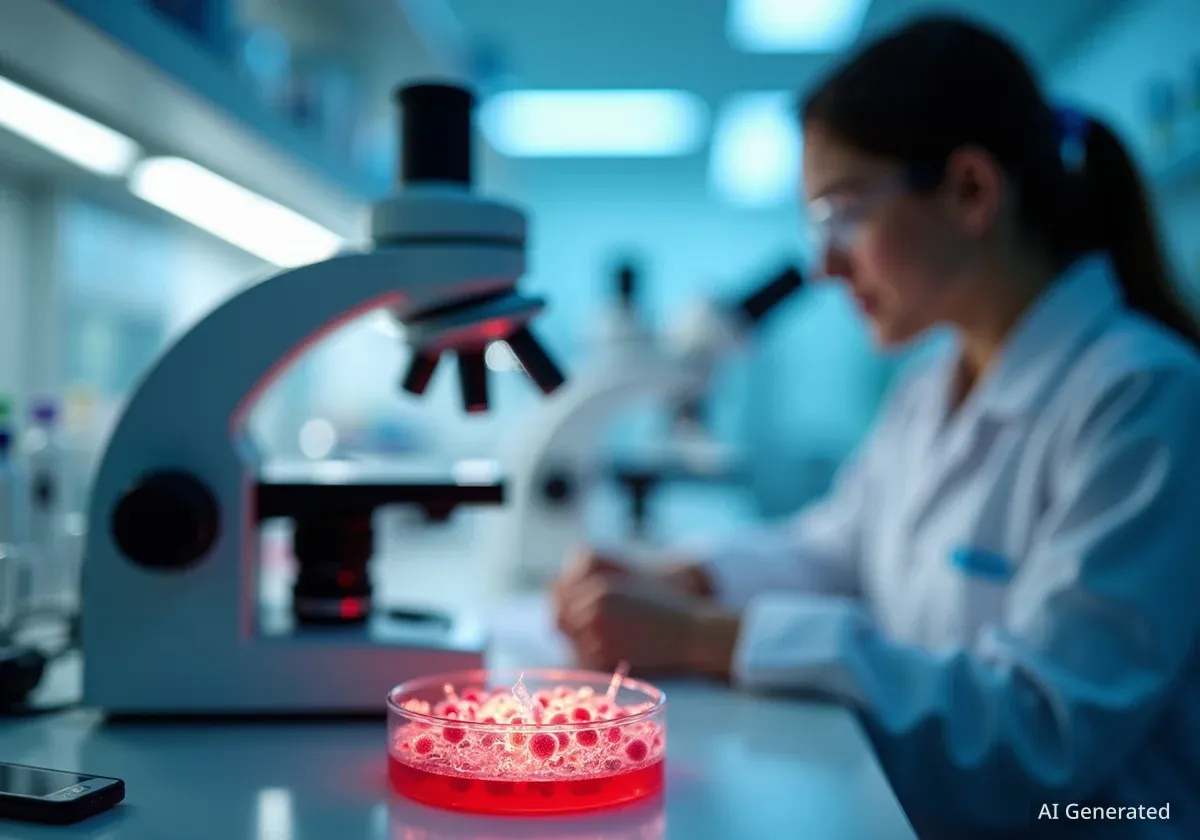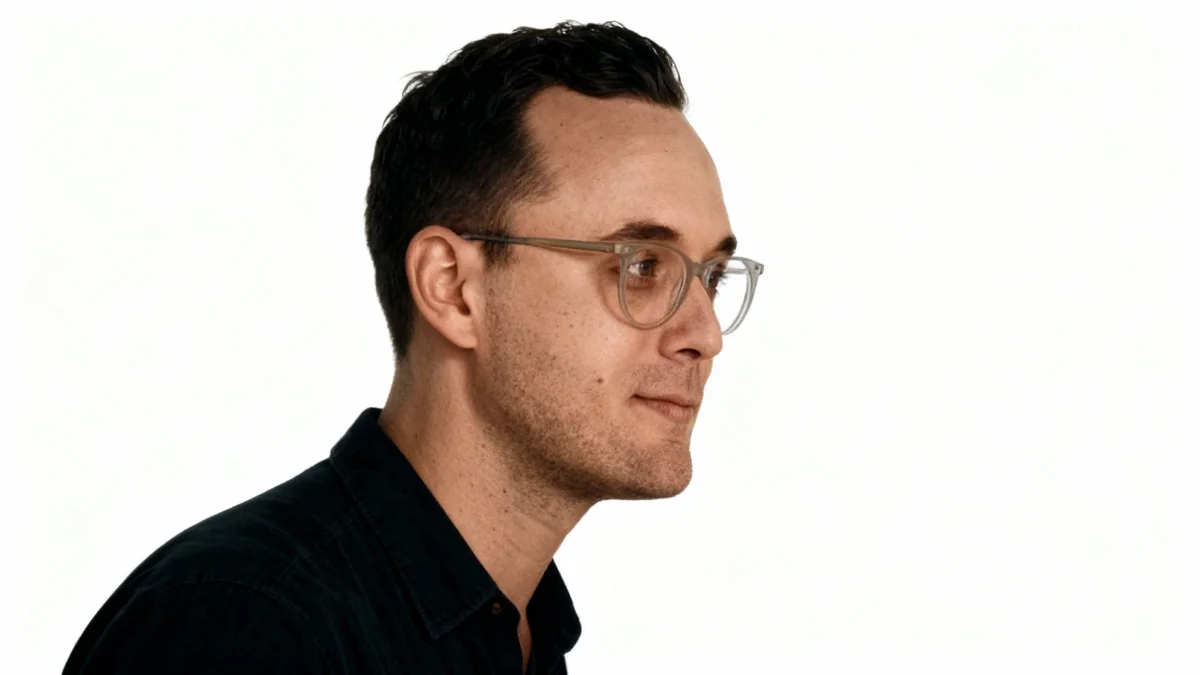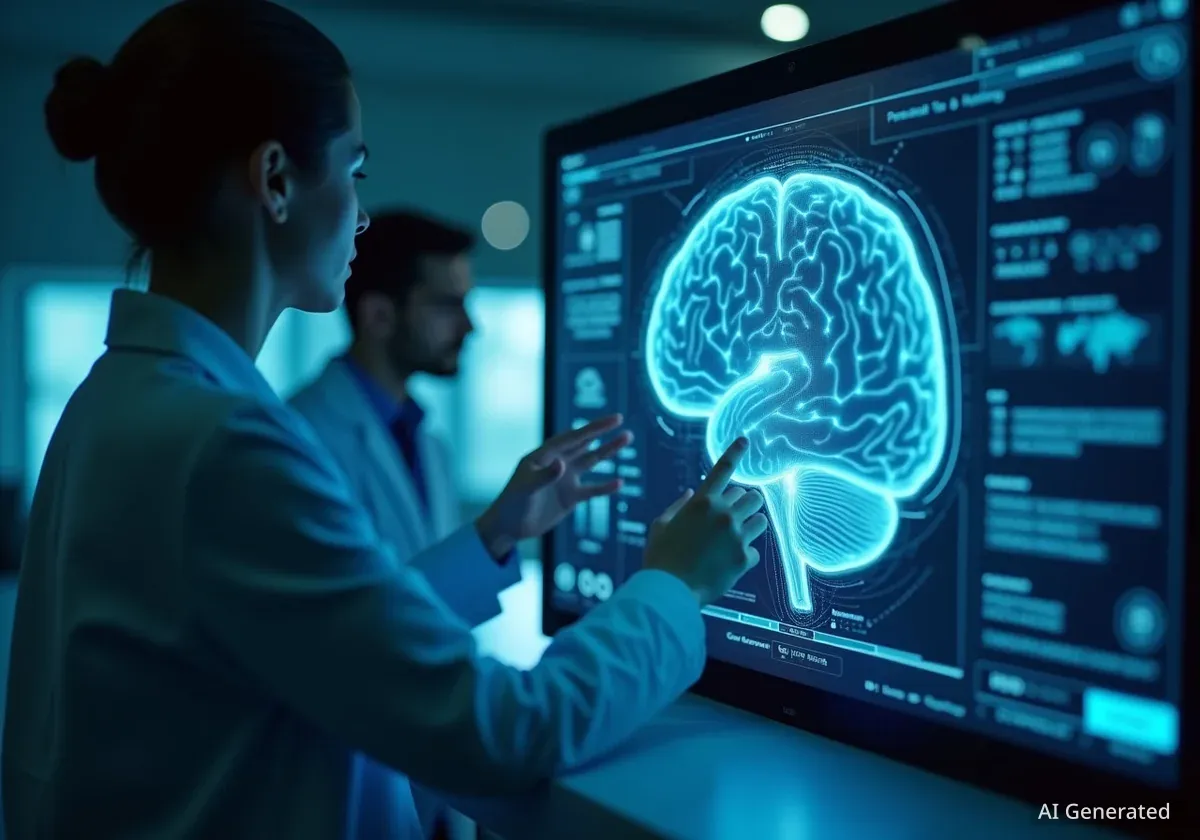Researchers from Stanford University and the Arc Institute have successfully used artificial intelligence to design and create functional virus genomes. The AI-generated genetic codes were synthesized into DNA, resulting in viruses that could replicate and infect bacteria, marking a significant step in generative biology.
The study, detailed in a preprint paper, demonstrates how generative AI, similar to the technology behind models like ChatGPT, can be applied to compose entirely new biological instructions. This achievement could accelerate research in synthetic biology and open new avenues for developing medical treatments.
Key Takeaways
- An AI model named Evo was trained on 2 million virus genomes to learn the principles of genetic code.
- The AI generated 302 new genome designs for a bacteriophage, a virus that infects bacteria.
- Of the designs tested, 16 resulted in viable viruses that successfully replicated and killed E. coli bacteria.
- Experts view this as a foundational step toward AI-designed life forms and faster biological engineering.
- The technology raises significant ethical questions regarding biosecurity and the potential for misuse.
AI as a Biological Composer
The research team in California focused their efforts on a specific type of virus known as a bacteriophage. These viruses specialize in infecting bacteria and are relatively simple from a genetic standpoint. The chosen subject, phiX174, has a small genome consisting of just 11 genes and approximately 5,000 DNA base pairs.
To generate new genomes, the scientists employed two versions of an AI model called Evo. Unlike large language models trained on text from the internet, Evo was trained on a massive dataset of genetic sequences from about 2 million other bacteriophages. This process allowed the AI to learn the fundamental rules and patterns of viral DNA without being explicitly taught them.
Once trained, the AI was tasked with proposing entirely new genetic codes. According to Jef Boeke, a biologist at NYU Langone Health who reviewed the paper, the AI's output was both effective and surprising. “They saw viruses with new genes, with truncated genes, and even different gene orders and arrangements,” Boeke noted, highlighting the AI's creative capacity beyond simple imitation.
What is a Bacteriophage?
A bacteriophage, or "phage," is a virus that infects and replicates within bacteria. They are among the most common and diverse entities in the biosphere. Because they are harmless to humans, they are a subject of intense research for potential therapeutic uses, such as fighting antibiotic-resistant infections.
From Digital Code to Physical Reality
The true test of the AI's designs was whether they could function in the real world. The researchers selected 302 of the AI-generated genomes and used chemical processes to synthesize them into physical DNA strands. These synthetic DNA strands were then introduced to E. coli bacteria in petri dishes.
The experiment yielded a clear success. The team observed plaques—clear zones where bacteria had been killed—forming in the dishes. This indicated that some of the AI-designed genomes had successfully instructed the bacterial cells to produce new, functional virus particles. These new viruses then replicated and spread, killing more bacteria.
“That was pretty striking, just actually seeing, like, this AI-generated sphere,” said Brian Hie, who leads the lab at the Arc Institute where the study was conducted. His comment reflects the profound moment of seeing a digitally conceived entity come to life.
In total, 16 of the 302 designs proved viable, a success rate of over 5%. While this number may seem small, it is a significant achievement in a field where designing functional biological systems from scratch is notoriously difficult.
A Faster Form of Biological Engineering
The use of AI represents a major acceleration of biological research. J. Craig Venter, a pioneer who created one of the first organisms with a synthetic genome, described previous efforts as a long, manual process. “We did the manual AI version—combing through the literature, taking what was known,” he explained. Venter views the new AI methods as “just a faster version of trial-and-error experiments.”
However, that increase in speed is precisely what makes AI a transformative tool in biology. The ability to rapidly design and test thousands of genetic variations could dramatically shorten development timelines for new therapies and biotechnologies.
Speed and Scale of AI in Biology
The speed of AI is already reshaping biological sciences. In 2024, AI's ability to predict the complex 3D shapes of proteins earned a Nobel Prize. Investors are now pouring billions into AI-driven drug discovery, betting that it will make the development of new pharmaceuticals faster and cheaper.
Samuel King, a student who led the project, emphasized the broad potential. He noted that most gene therapies rely on viruses to deliver genetic material into human cells. “There is definitely a lot of potential for this technology,” King said, suggesting that AI could be used to design more effective viral delivery systems.
The Path Forward and Ethical Hurdles
While this research is a milestone, it is still an early step. Viruses are not considered fully alive, as they cannot replicate without a host cell. Creating a true AI-designed life form, such as a bacterium, presents a much greater challenge. An E. coli bacterium, for example, has a genome about a thousand times larger and more complex than the phiX174 virus.
Furthermore, there is no straightforward method to “boot up” a complex genome for a cell. Unlike the virus in the study, a bacterial genome cannot simply be inserted into a host to start working. Instead, scientists would need to painstakingly edit the DNA of an existing cell, a process that remains slow and laborious.
The technology also brings significant ethical concerns. The Stanford researchers were careful to work only with bacteriophages, which do not infect humans. However, the same techniques could potentially be applied to dangerous human pathogens.
“One area where I urge extreme caution is any viral enhancement research, especially when it’s random so you don’t know what you are getting,” Venter warned. “If someone did this with smallpox or anthrax, I would have grave concerns.”
Despite the risks, the promise of AI-driven biology is immense. Jason Kelly, CEO of the cell-engineering company Ginkgo Bioworks, advocates for a large-scale, automated effort to design and test genomes, feeding the results back into AI models to create a cycle of continuous improvement. He sees this as a critical scientific frontier. “The US should make sure we get to it first,” Kelly stated.





